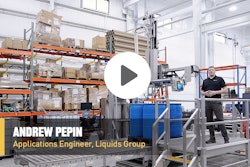Future research is needed to ensure the safe and smooth adoption of Intelligent Packaging. Conducting the research frequently requires a system approach involving interactions between researchers in food packaging, food engineering, biotechnology, microelectronics, software engineering, nanotechnology, and other disciplines.
In the business world, decision support systems—a DDS is defined as a computer program application that analyzes business data and presents it so that users can make business decisions more easily—are now available for analyzing data and for facilitating decision-making. However, those decision support systems are not adequate for Intelligent Packaging applications. What is lacking is the scientific knowledge necessary for food quality and safety enhancement. Although there is a vast amount of scientific knowledge about foods in the Journal of Food Science and other journals, further research is still needed to transform existing knowledge of foods into a form that can be incorporated into the data layer and food models for the Intelligent Packaging system.
A multidisciplinary approach is needed to develop small, powerful, and cheap smart package devices for Intelligent Packaging applications. Advanced smart package devices such as biosensors are still in early development; slow response time and short shelf life are issues. Yet possibilities exist in combining biotech and nanotech to develop biosensors to overcome these and other limitations. Research opportunities also exist to integrate data carriers (such as bar code and RFID) and package indicators (such as TTI and gas indicators) into small hybrid devices. As various smart package devices are being developed, it is imperative to establish universal standards to allow efficient data exchange.
It’s also important to emphasize that Intelligent Packaging is only one part of the total packaging system, and thus future research is needed to integrate it smoothly and efficiently into that total system. Combining Intelligent Packaging and Active Packaging offers many intriguing possibilities: for example, a packaging system may consist of a TTI/biosensor to sense the environment, and whenever necessary, release an antimicrobial and/or antioxidant to extend the shelf life of food. In the future, hybrid Intelligent Packaging/Active Packaging systems will become increasingly sophisticated.
Advancement in Intelligent Packaging will require researchers to continue to think outside the box and use nontraditional packaging approaches to meet new challenges. As this technology unfolds, issues such as those relating to legislation, economics, and consumer privacy also need to be addressed.
This is a synopsis of a 10-page paper that appeared in Journal of Food Science (Vo. 70, #1, 2005). Authors Yam and Takhistov are with the Dept. of Food Science at Rutgers University; Arthur Miltz is with Dept. of Biotechnology and Food Eng. at Technion-Israel Inst. of Technology. Direct inquiries to author Yam at [email protected]

























